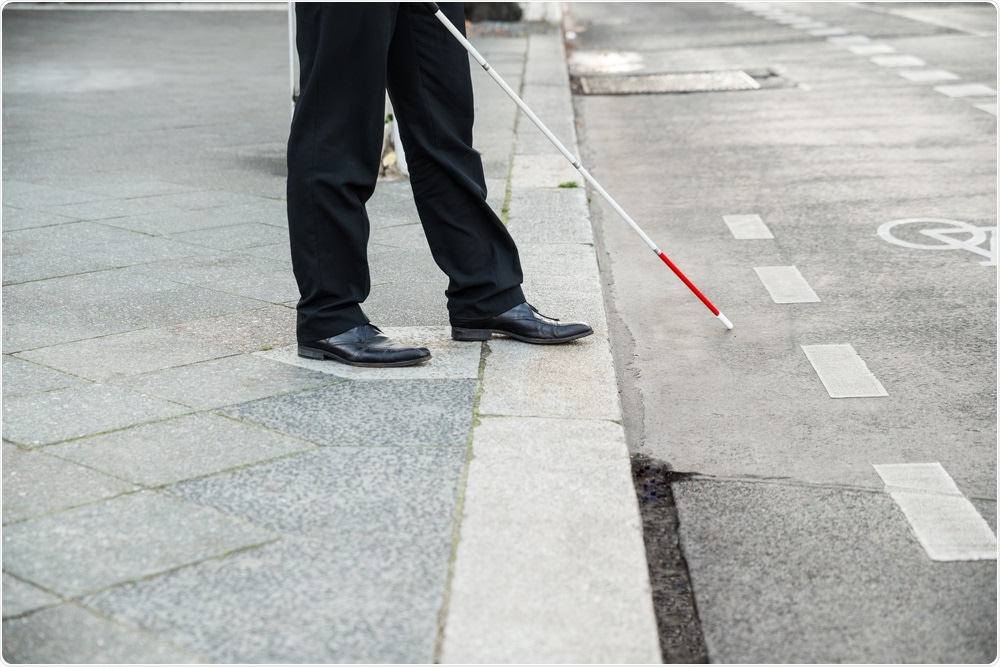Researchers at the Netherlands Institute for Neuroscience (NIN) have made significant steps towards developing a brain implant that will restore sight to those affected by visa impairment and blindness. The team released the findings of its current research project in the journal Science this month.

Image Credit: Andrey_Popov/Shutterstock.com
The project’s findings demonstrate how high-resolution implants developed by the Netherlands-based team could allow a person to recognize artificially generated shapes and percepts when implanted within the visual cortex.
Using electrodes to synthesize images
Statistics show that there are roughly 285 million people around the world with a visual impairment, with 39 million of these people considered blind. While there are different types of blindness, with several root causes, mostly, blindness is currently incurable.
Back in the 1970s, the idea emerged of using implants to stimulate the primary visual cortex via implants as a potential method of restoring sight. While the idea has a strong scientific basis, the currently available technology only allows for the generation of a few artificial pixels at a time, limiting the resolution and complexity of the images that can be generated.
Scientists at the NIN recognized the value of developing more stable and durable implants that have the capability of generating more complex imagery. Given the vast number of people around the world who are blind, the development of enhanced brain implants to restore vision (even if not complete vision) would be incredibly important.
The team at NIN, lead by Pieter Roelfsema, are currently working on integrating the most advanced technologies in implant production and implantation alongside revolutionary materials and engineering, and the latest updates in microelectronics and microchip fabrication to establish implants that are a marked improvement on previously available technology.
The results from the team's first study with their newly developed technology are encouraging.
Creating complex images
The way brain implants induce a visual scene in the mind of the implant wearer is via stimulating the brain with electricity delivered via the implant’s electrode, this generates a dot of light in a particular point in their visual scene, which relates to the point of the brain that is stimulated. This point of light is called a ‘phosphene’.
With the currently available brain implants, only a small number of phosphenes can be generating, resulting in producing low-resolution images. The NIN team aimed to increase this resolution. They created implants containing a total of 1024 electrodes, enough to produce high-resolution images. They tested their implants by placing them into the visual cortex of two monkeys who were not blind.
The team produced phosphenes by stimulating a single electrode in the implants. These phosphenes were triggered in various locations in the monkeys’ visual fields. The monkeys’ eye movements were tracked during this task, and this data was used as an indicator that the phosphenes were located.
The monkeys were also tested on more complex tasks. For example, sequences of electrodes were coded to trigger phosphenes in succession to give the simulation of a phosphene in motion, combinations of electrodes were triggered simultaneously to create the perception of a letter, these letters were used in discrimination tasks.
Overall, the data demonstrated that the monkeys were successful in recognizing shapes and percepts, they were able to distinguish lines, moving dots, and letters.
The team achieved its goal of generating interpretable images via electrical stimulation to their cutting-edge implants. They successfully integrated a large number of electrodes to create relatively complex images that were distinguishable. Roelfsema commented on the significance of the study’s results, "The number of electrodes that we have implanted in the visual cortex, and the number of artificial pixels that we can generate to produce high-resolution artificial images is unprecedented”.
Future technology will likely be influenced by what was achieved by the team at NIN. The newly established implant that directly interacts with the brain will provide a foundation for other research teams to develop advanced devices that may restore sight to the blind.
In the beginning, this will likely be restoring the ability to recognize familiar objects and navigate surroundings, but there is a potential for the technology to restore even more complex aspects of sight.
Source:
- https://nin.nl/restoration-of-vision/